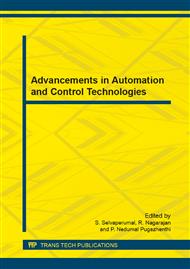p.556
p.560
p.565
p.571
p.576
p.582
p.588
p.593
p.600
A Novel Dynamic Resilient Ensemble Physical Proximity Resource Management Scheme Adopting for Distributed Environments
Abstract:
Heterogeneous grid resources in hand by completely different organization spread throughout the internet or wide area networks. In existing Distributed Hash Table (DHT) is the organization used for that mapping key to the nodes of a network based on a standardized hashing performs. to meet high scalable and dynamism resilient, thence we have a tendency to propose a Grid resource management theme called ranked Cycloid Overlay design (HCO) that\'s data locality-preserving. In HCO, we have a tendency to establish program/data locality by cluster resources based on their physical proximity and practical matching with user application. We have a tendency to any develop dynamism-resilient resource management rule, cluster-token forwarding rule, and deadline-driven resource management algorithms square measure planned. On adopting these algorithms consumes less overhead, speedy, dynamism-resilient multi resource discovery. The well-organized resource cluster, reduces communications price, and enhances resource discovery success rate flexibly extant in large scale applications.
Info:
Periodical:
Pages:
576-581
Citation:
Online since:
June 2014
Authors:
Price:
Сopyright:
© 2014 Trans Tech Publications Ltd. All Rights Reserved
Share:
Citation:


